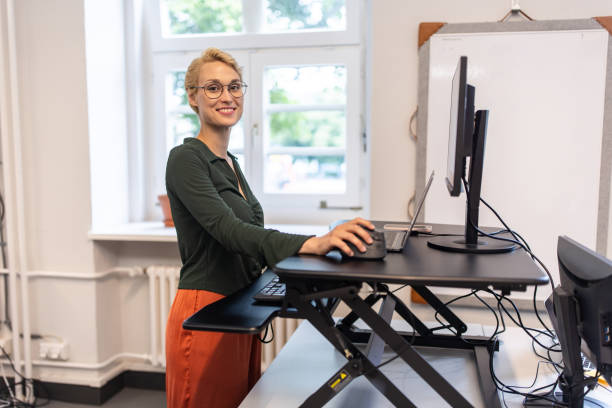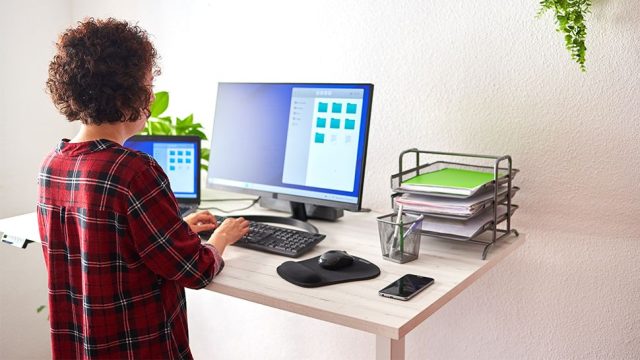The Truth About Sitting: Is Sitting the New Smoking?
By Trevor Fields
January 5, 2025 • Fact checked by Dumb Little Man
The Risks of Too Much Sitting
A growing health concern

Physical inactivity ranks as the fourth leading cause of death, contributing to over 3.2 million deaths and 32 million disabilities annually. Studies show that prolonged sitting significantly raises the risk of death and increases overall mortality risk, even surpassing the dangers associated with obesity and smoking.
In 2016, the global rate of physical inactivity was estimated at 27.5%, with women exhibiting higher levels of sedentary behavior than men. Reducing physical inactivity is crucial for improving global health outcomes and preventing avoidable deaths.
Health consequences of excessive sitting

Prolonged sitting is linked to a higher risk of cardiovascular disease-related deaths. Sitting increases cancer risk, with several types of cancer, such as breast and colon cancer, being associated with inactivity. Research shows that spending more than four hours in front of a television significantly raises the risk of death compared to sitting for less than two hours.
Additionally, excessive sitting negatively affects mental health, increasing the likelihood of developing conditions such as dementia and anxiety. Reducing sedentary behavior is essential for both physical and mental well-being.
The impact of too much sitting on physical activity

Sitting is the new smoking, and taking regular work breaks after 30 minutes of continuous sitting can significantly reduce mortality risks. Incorporating frequent body movements throughout the day is more beneficial than relying solely on a 45-minute workout.
Switching positions from sitting to standing every 20 to 30 minutes promotes better overall health, improving circulation and reducing the negative effects of prolonged sitting. By staying active with short, frequent movements, you can combat the risks of sedentary behavior and enhance both physical and mental well-being.
The Health Consequences of Sitting
Cardiovascular disease: A major risk factor

Prolonged sitting increases the risk of cardiovascular disease, including heart attacks and strokes. Men who sit for more than 5 hours per day without regular exercise face a significantly higher risk of heart failure.
Engaging in moderately intense physical activity for 60-75 minutes daily can effectively counter the negative effects of excessive sitting, helping to lower cardiovascular risks and promote overall health. Regular movement and exercise are essential to reducing the dangers associated with prolonged sedentary behavior.
Obesity, cancer, and other health risks

Prolonged sitting is associated with serious health risks like obesity, metabolic syndrome, increased blood pressure, high blood sugar, and excess body fat around the waist. It also raises the risk of cancer, with 173,000 cases in the U.S. linked to inactivity.
Furthermore, excessive sitting increases the risk of type 2 diabetes, deep vein thrombosis, and Alzheimer’s disease. Reducing sedentary behavior and incorporating regular movement is essential for preventing these health risks and improving overall well-being.
The link between sitting and type 2 diabetes

Prolonged sitting significantly increases the risk of type 2 diabetes, with a hazard ratio of 1.91. Reducing sitting time and incorporating more physical activity throughout the day can greatly improve health and lower the risk of developing type 2 diabetes.
Regular movement, even in short intervals, is essential for maintaining optimal health and preventing conditions like type 2 diabetes. Simple activities, such as standing up, stretching, or walking for a few minutes every 30 minutes, can help regulate blood sugar levels, improve insulin sensitivity, and boost metabolism.
The Benefits of Standing and Physical Activity
Standing desk: A potential solution

Standing desks offer numerous benefits, including improving employee morale and reducing absenteeism. By allowing employees to switch between sitting and standing, these desks help reduce discomfort and fatigue, leading to a more positive work environment. This improvement in workplace well-being can lead to increased productivity as employees feel more energized and engaged throughout the day.
In addition to boosting morale, standing desks can lower healthcare costs by reducing the risk of chronic diseases like obesity, cardiovascular issues, and type 2 diabetes. Regular use promotes better overall health, helping employees stay healthier and more productive while reducing time lost to illness. Incorporating standing desks in the workplace is a proactive way to support employee health and enhance business efficiency.
The importance of regular physical activity

Engaging in regular physical activity significantly reduces the risk of cardiovascular disease, type 2 diabetes, and certain types of cancer. Staying active supports heart health improves insulin sensitivity, and lowers the risk of chronic illnesses. Incorporating exercise into daily routines is essential for long-term health and disease prevention.
Additionally, physical activity has a profound impact on mental health, helping to reduce the risk of anxiety and depression. Studies show that 60-75 minutes of moderately intense physical activity each day can effectively counter the negative effects of prolonged sitting, promoting both physical and mental well-being.
Combating sedentary behavior at home and work

Encouraging physical activity in children is crucial for reducing the risk of obesity and improving their overall health. Active children are more likely to maintain healthy body weight, develop strong muscles and bones, and enhance their cardiovascular fitness. Instilling active habits early sets a foundation for lifelong well-being.
Creating a healthy environment that promotes physical activity and reduces sedentary behavior is essential for kids and adults alike. Employers can support this by providing standing desks and encouraging regular breaks, helping employees stay active, productive, and healthier in the long run.
Transitioning to a Healthier Lifestyle
Tips for using a standing desk

Start slowly by gradually increasing your standing time to allow your body to adjust comfortably. Begin with short intervals and progressively extend the duration to prevent fatigue.
Consider using an anti-fatigue mat, which helps reduce pressure on your legs and back, providing extra support and comfort when standing for extended periods.
It's also important to take regular breaks to stand and move around throughout the day, promoting better circulation, reducing the strain from sitting and enhancing overall health and productivity.
Building standing into your daily routine

Incorporate movement into your daily routine by adding simple activities like taking a walk during lunch or doing a few jumping jacks during commercial breaks. These small actions help break up prolonged sitting and keep you active.
Using a sit-stand desk allows you to alternate between sitting and standing throughout the day, reducing the negative effects of prolonged sitting and promoting better posture and circulation.
Make physical activity a priority by scheduling it into your daily routine, ensuring you stay consistent and maintain a healthy, active lifestyle.
Creative ideas for increasing physical activity

Consider adding strength training exercises to your daily routine to improve muscle tone, boost metabolism, and support overall health. Simple exercises like squats, lunges, or resistance bands can be easily done at home or in the office.
A standing desk converter is a great option to transform your existing desk into a sit-stand workspace, allowing for more flexibility and promoting better posture.
Make physical activity a priority by scheduling it into your daily routine, ensuring consistent movement and long-term health benefits.
The Impact of Sitting on Mental Health
Anxiety and depression: A growing concern

Excessive sitting is linked to a higher risk of anxiety and depression, as prolonged inactivity can negatively affect both physical and mental well-being. Incorporating regular movement into your day is crucial for mental health.
Engaging in physical activity not only helps reduce the risk of anxiety and depression, but it also improves mood and promotes overall mental well-being. Additionally, regular physical activity can enhance brain function, reducing the risk of cognitive decline and promoting long-term mental health.
The link between sitting and cognitive decline

Prolonged sitting is associated with an increased risk of cognitive decline and conditions like dementia, as inactivity negatively impacts brain health over time.
Engaging in regular physical activity helps reduce the risk of cognitive decline and promotes better overall brain health, supporting memory, concentration, and mental sharpness.
For children with ADHD, regular physical activity can improve focus and behavior, providing an outlet for energy and enhancing their ability to concentrate on tasks. Prioritizing movement benefits both mental and physical well-being.
The benefits of physical activity for mental health

Physical activity is an effective way to reduce stress and improve mood, as it triggers the release of endorphins, which promote a sense of well-being and relaxation.
Engaging in regular physical activity also enhances sleep quality and helps reduce the risk of insomnia, allowing for deeper, more restful sleep.
By making exercise a consistent part of your routine, you can improve overall mental health and significantly lower the risk of developing mental health disorders, such as anxiety and depression.
Employers and Standing Desks
Why employers should consider standing desks

Prolonged sitting can lead to various health problems, making it essential for workplaces to offer alternatives to sitting all day. Encouraging the use of standing desks and promoting movement can contribute to a healthier workforce, reducing the risk of conditions like obesity, heart disease, and diabetes.
Implementing standing desks can also boost employee morale and lower absenteeism. These desks promote better posture and energy levels, leading to higher productivity and reduced healthcare costs by preventing chronic health issues associated with prolonged sitting.
The benefits of standing desks for employees

Standing desks can help reduce the risk of chronic diseases like obesity, heart disease, and type 2 diabetes, while also improving overall health by encouraging more movement throughout the day.
For employees with ADHD, standing desks can improve focus and behavior, providing an outlet for restlessness and enhancing concentration.
By promoting physical activity and reducing sedentary behavior, standing desks create a healthier work environment that supports both physical and mental well-being.
Implementing standing desks in the workplace

Standing desks can help reduce the risk of chronic diseases like obesity, heart disease, and type 2 diabetes, while also improving overall health by encouraging more movement throughout the day.
For employees with ADHD, standing desks can improve focus and behavior, providing an outlet for restlessness and enhancing concentration.
By promoting physical activity and reducing sedentary behavior, standing desks create a healthier work environment that supports both physical and mental well-being.
Children and Sitting
The risks of excessive sitting for children

Excessive sitting can increase the risk of obesity in children, impacting their long-term health. Encouraging more physical activity is key to improving overall health and reducing sedentary behavior.
Prolonged sitting can also raise the risk of cognitive decline and conditions like dementia in children over time, underscoring the need for regular movement.
Incorporating regular physical activity helps improve focus and behavior in children with ADHD, providing mental and physical benefits that support their development and well-being.
Creating a healthy environment for kids

Parents can foster physical activity in children by encouraging outdoor play and limiting screen time, helping to reduce sedentary behavior and promote a more active lifestyle.
Creating a healthy environment that emphasizes physical activity is essential for reducing long periods of inactivity, and ensuring children stay engaged and active throughout the day.
Incorporating regular physical activity not only improves overall health but also lowers the risk of developing chronic diseases in children, such as obesity, diabetes, and cardiovascular conditions.
The Bottom Line
Taking action to reduce sitting time

Reducing sitting time and increasing physical activity are essential for better health, helping to lower the risk of chronic diseases like obesity, heart disease, and diabetes. Employers can support this by offering standing desks and encouraging regular breaks, creating a more active and productive work environment that promotes well-being.
Parents can play a key role in encouraging physical activity in children by promoting outdoor play and limiting screen time, fostering healthier habits that reduce sedentary behavior and support long-term health.
Creating a healthier lifestyle through physical activity

Regular physical activity is crucial for improving overall health and lowering the risk of chronic diseases such as heart disease, diabetes, and obesity. In addition to physical benefits, physical activity enhances mental health by reducing the risk of anxiety and depression, promoting a more balanced and positive mindset.
Engaging in moderately intense physical activity for 60-75 minutes a day can effectively counter the negative effects of prolonged sitting, helping to maintain better physical and mental well-being.
The importance of awareness and education

Awareness and education are crucial in promoting physical activity and reducing sedentary behavior, helping individuals understand the long-term benefits of staying active.
Both employers and parents can foster a healthy environment by encouraging regular breaks and promoting movement throughout the day, whether through standing desks or outdoor play for children.
Engaging in regular physical activity improves overall health and significantly reduces the risk of chronic diseases such as heart disease, diabetes, and obesity, making it an essential part of a healthy lifestyle.
Trevor Fields
Trevor Fields is a tech-savvy content strategist and freelance reviewer with a passion for everything digital—from smart gadgets to productivity hacks. He has a background in UX design and digital marketing, which makes him especially tuned in to what users really care about. Trevor writes in a conversational, friendly style that makes even the most complicated tech feel manageable. He believes technology should enhance our lives, not complicate them, and he’s always on the hunt for tools that simplify work and amplify creativity. Trevor contributes to various online tech platforms and co-hosts a casual podcast for solopreneurs navigating digital life. Off-duty, you’ll find him cycling, tinkering with app builds, or traveling with a minimalist backpack. His favorite writing challenge? Making complicated stuff stupid simple.

